New paradigm of Bitcoin’s perpetual hedging: How does Aegis use short contracts to build a decentralized stablecoin YUSD?

Reprinted from panewslab
04/26/2025·19DAuthor: Stacy Muur
Compiled: Tim, PANews
We have seen stablecoins supported by fiat currency and stablecoins secured by cryptocurrencies. Aegis's idea is different: a stablecoin supported by Bitcoin.
Here are the boldness of its design and the possible reasons for its success.
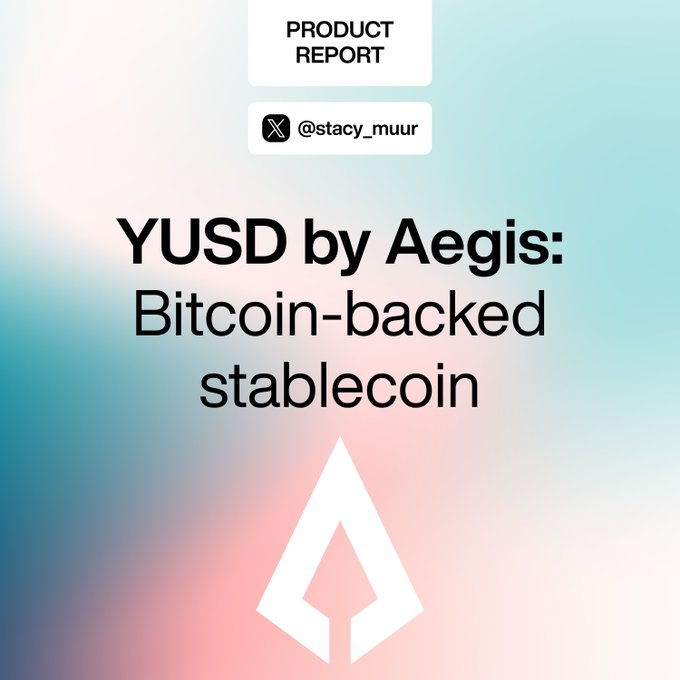
Most stablecoins today rely on a centralized system that Bitcoin avoids when it was designed:
- Fiat currency custody
- Bank clearing
- Regulatory restrictions
Aegis adopted a different strategy, choosing to build a system around Bitcoin rather than a bank.
Aegis named its stablecoin YUSD:
- Anchor $1 price
- Backed by Bitcoin Staking
- Maintain stability by shorting perpetual contracts
No oracle required, no currency reserves, no third-party intermediaries
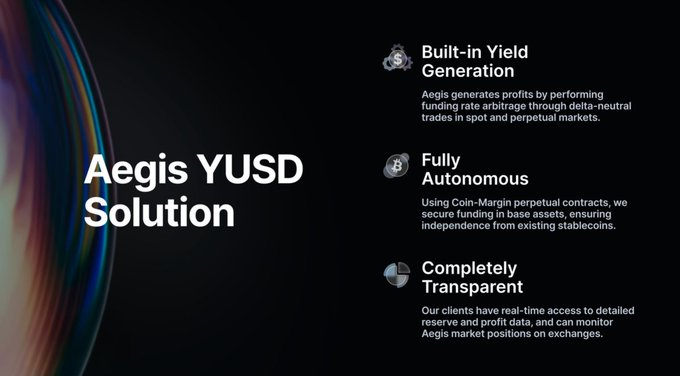
YUSD will only be minted when stablecoins such as USDT, USDC or DAI are deposited into Aegis Mint smart contracts.
Once the verification is passed, YUSD is generated and the corresponding collateral will be transferred to a secure custody vault.
There is no off-chain casting switch, no manual intervention, everything is controlled only by the smart contract logic.
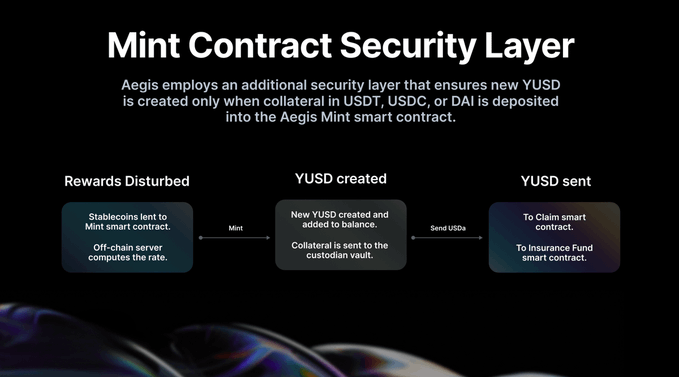
So, how exactly does Aegis operate end-to-end?
- You can use funds for minting or redemption (on-chain or decentralized exchange) operations to obtain YUSD
- Aegis uses these funds to buy BTC
- Hedge the risk of price fluctuations by opening short perpetual contracts
- Earn capital rate income in short positions
- Earnings distribution: Partially injected into the insurance pool, partly distributed to YUSD holders
This is the cycle mechanism of YUSD.
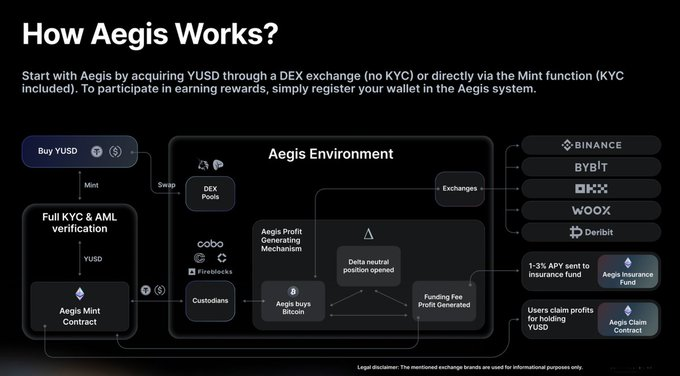
But where do these profits come from?
When Aegis shorts the Bitcoin perpetual contract, it profits from traders paying for the capital rate.
As long as there is a need to go long, these fees will be charged three times a day.
This is not pledge, nor is it inflation.
This is how the opponent's trading pressure turns into profits.
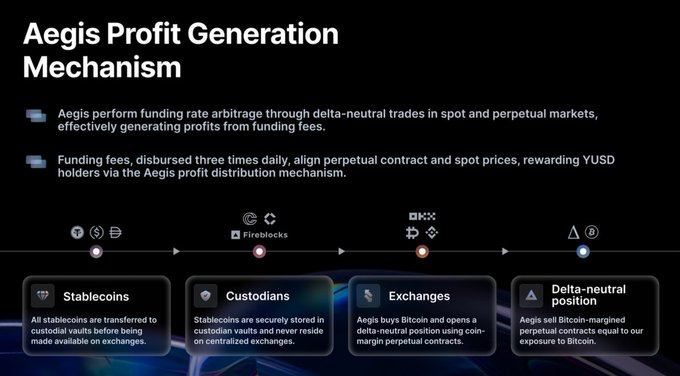
Aegis won't ask you to do anything extra.
Hold YUSD → Aegis earning fees → Snapshot record share → Reward generation → Receive through the APP
Look, the benefits are caused by the strong wind.
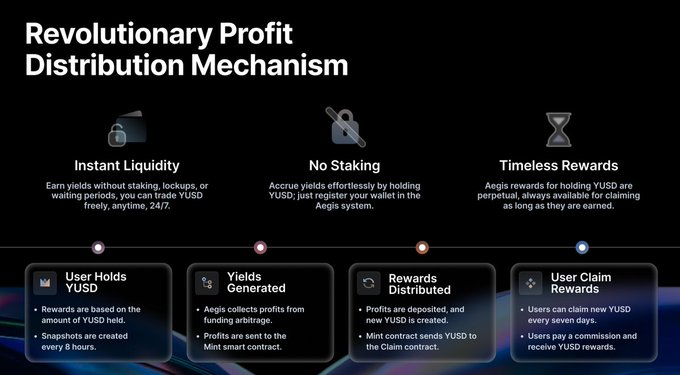
Aegis is built to ensure safety and reliability, independently avoid centralized risks, and avoid common single-point failures:
- Unable to support the currency
- No USDC reserves
- No oracle dependence
Bitcoin only, staking hedging, off-site holding, real-time monitoring.
No single income model is perfect, especially one linked to funding rates. So, what happens if the capital rate turns negative?
Aegis has established an insurance fund for this.
- 1-5% of the income will be transferred to the insurance fund
- Enable the fund when the fund rate turns negative and the shorting cost increases
- Managed by multi-signature smart contracts
- Subsequent control will be transferred to Aegis DAO
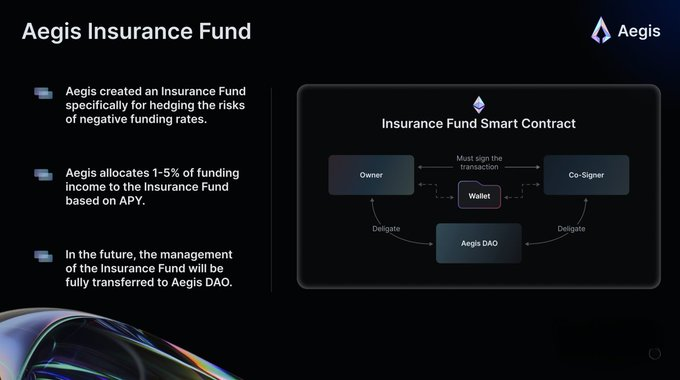
Aegis seems to be very focused on transparency:
- Trusteeship reserves are verifiable
- Exchange positions are public
- Read-only API exposes system status
You don't have to guess its inherent running logic, but you can observe the results in real time.
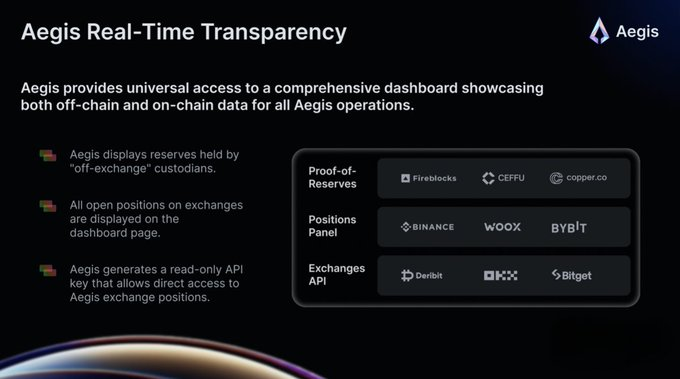
Insurance funds manage risks, while the Aaegis points system drives growth. Users can obtain points every day through the following methods:
- Hold YUSD (get 15 points per 1 USD per day)
- Provide liquidity (30 points per dollar per day, 2x bonus)
- Lending through Euler (45 points per day, 3 times the bonus)
- Complete social tasks (50 points per task, 5 times bonus)
This product and service is now fully launched on Ethereum and BNB Chain.
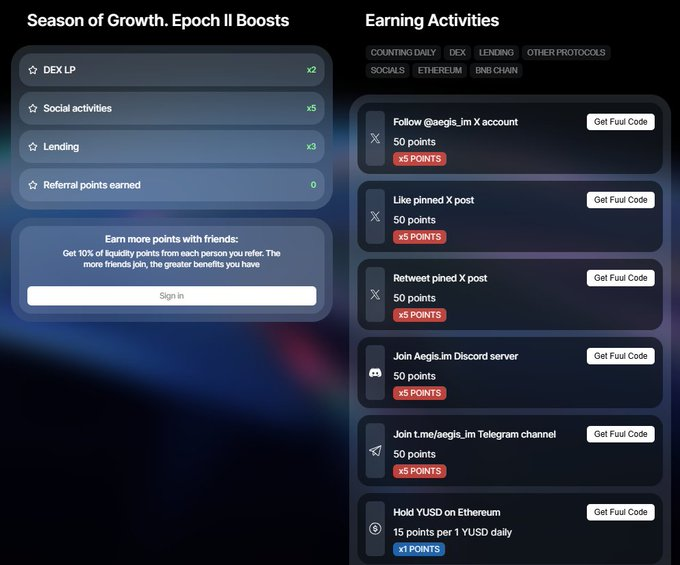
In Season 1, all points earnings will receive a 50% bonus, which allows early users to share a higher percentage of AEG token rewards.
Overreward: Euler integrated unlock loop strategy - deposit YUSD → earn points → borrow stablecoins → repeat this process.
This can maximize returns and double points.
Points are not just numbers. Every week, the total AEG supply of 0.2% will be allocated based on your share of points.
There is no need to worry about the delayed issuance of airdrops, nor do you need to guess the allocation rules.
Transparent and open, everything goes as planned, and is directly linked to the use of the agreement.
Aegis is an early project aimed at building stablecoins that do not rely on fiat currency, oracle or licensed collateral.
Whether the model will still be effective in turbulent markets or can be expanded in real-life use scenarios is still uncertain.
But this is one of the clearest experiments in Bitcoin-based currency design so far.



 chaincatcher
chaincatcher